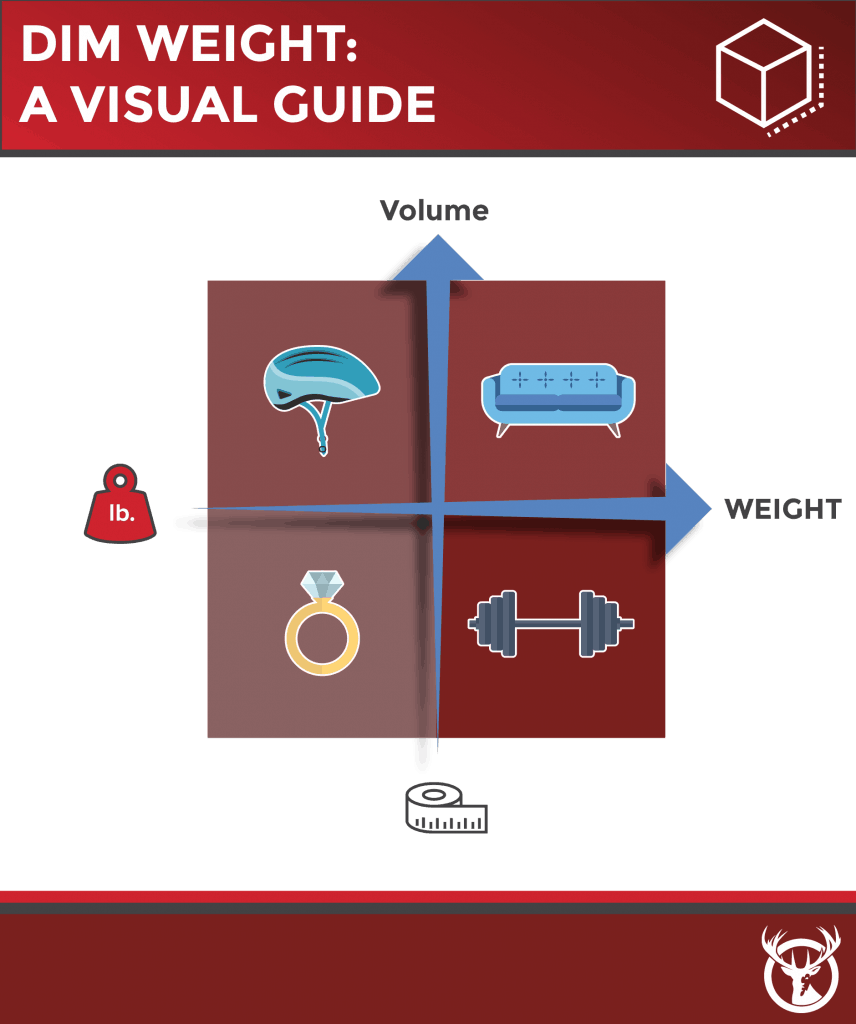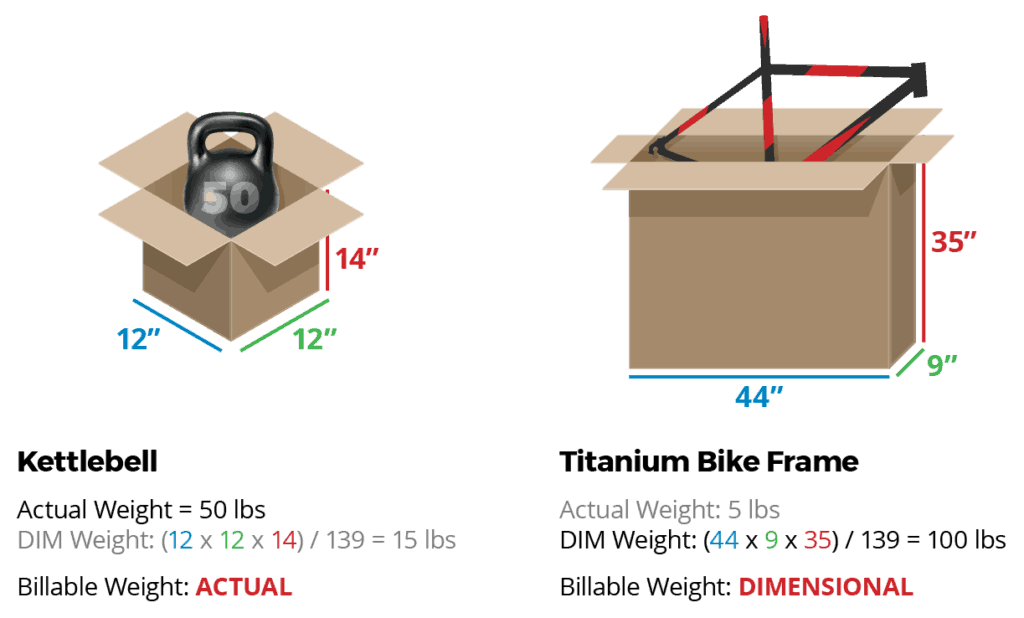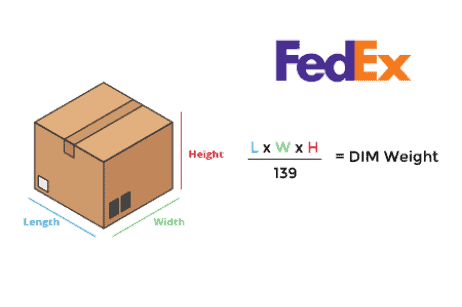At Red Stag Fulfillment, we’re often asked how does DHL calculate dimensional weight or how do other carriers apply these metrics. Companies like yours need to estimate expenses, especially when considering international expansions. It doesn’t make sense to sell to customers worldwide if each shipment eats away at your profitability.
So, we’re taking a quick look at DHL and how it talks about dimensional weight, some equations to help you start creating estimates, and a few of the complexities to consider for moving goods internationally.

Speak the lingo: Volumetric weight
When you want to know how does DHL calculate dimensional weight for international shipping, the first place to start is with “volumetric weight.” That’s the term DHL tends to use in place of dimensional weight because the math calculates the volume of the parcel.
It’s also good to know that DHL’s international DIM weight calculations are typically measured in centimeters and expressed in kilograms. That’s much the same way our U.S. DIM weight calculator measures your package in inches then gives you a pound weight. Carriers calculate these two types of weight to ensure that they charge you the right amount. Getting the math right at the start helps you estimate cost best and choose the right transportation option. And remember, your product plays a significant role in which rate applies.
Now that you’ve got an idea of the units of measurement and know that DIM weight is also volumetric weight, let’s look specifically at your volumetric equations.

Math: How does DHL calculate dimensional weight
Calculating your volumetric weight requires a precise camera, tape, or dimensional weight scale. You’ll measure the three dimensions of each parcel (length, width, and height) in centimeters. Multiply these numbers together to get the volume of your package in centimeters. If you’re shipping multiple uniform packages, you can multiply this to get the total volume shipped. Now, you need to know how to turn that into a billable weight.
After you have the volume, DHL will divide that total by a density ratio to convert it to a billable volumetric weight in kilograms. The density ratio number depends on the transportation mode you use. Airfreight products tend to have the largest density ratio numbers, giving you the lowest volumetric weights. However, that doesn’t translate into the lowest final cost! Remember to use this weight to price out every option to find your best solution for keeping costs low and getting products to arrive on time.
The equation for how does DHL calculate dimensional weight:
((Length x Width x Height, in centimeters or inches) / density ratio number) = volumetric weight
One important note that many don’t consider when looking at how does DHL calculate dimensional weight is the full scope of your shipment. According to the company, gross and volumetric weights of your shipments include packaging and pallets. So, perform both weight calculations after your product is packed and ready to ship.
DIM some DHL exports
If you’re a U.S. company using DHL for exports, you may be able to use DIM weight calculations in inches. This allows you to calculate volume by multiplying length, width, and height of a package in inches. Then, you divide that large number 139 – a standard divisor for the express carrier – to get a weight in pounds.
Always round up to the next whole number, giving you the DIM weight. Let’s assume you’ve got a 10 lbs. package that is in 10x10x10 package. The standard weight for determining price would be 10 lbs. Your dimensional weight would be the volume (10x10x10, or 1,000) divided by 139. That gives you 7.19, rounding up to 8 lbs. You would pay for the standard physical weight.
However, if the package was 10x10x20, the volume is 2,000 inches and dividing it by 139 gives you 15 lbs. (after rounding). In this case, you’d pay the 15 lbs. DIM weight. Here are a couple more examples to consider:

This is a simplified look at DHL’s DIM weight calculations. However, there’s a chance you’ll be using its global forwarding services for any high-volume exports and international shipments. These have more variation in cost and math, so we’ll look at that next.
International DIM depends on the mode of transport

Let’s look at what the difference will mean for standard shipping products across three transportation modes according to DHL. These are used for imports to the U.S. as well as larger or more complex international shipments.
Our example package will be a 50cm-square box. That makes it easy, so our volume is always 125,000 cm. The density ratios below apply to DHL Global Forwarding. These numbers can vary based on location, transport mode, and even product type, so you always want to work with DHL directly to get a precise divisor before making any product selection.

- Air freight has a 1:6 density ratio, so the divisor is 6000. Our equation is ((LxWxH)/6000) or (125,000/6,000), which gives us a volumetric weight of 20.8 kilograms. DHL rounds up to the nearest whole number, so your final billable volumetric weight is 21kg.
- Ocean freight has a 1:1 density ratio, so our divisor is 1,000. For this package, we’re looking at (125,000/6,000), giving us a volumetric weight of 125kg.
- Rail freight is in the middle with a 1:3 density ratio and a divisor of 3,000. That means our square package uses the formula of (125,000/3,000), with a volumetric weight of 41.67, and a final volumetric weight of 42kg.
Note that road freight doesn’t have a standard density ratio. DHL says it varies significantly by location and carrier partner, so it does not offer a good number for you to start estimating cost.
DHL says to read the fine print
One big caveat in all of this is that carriers may impose different density ratios, impacting your volumetric weight. You may find that a carrier uses a 1:3 ratio for most inland transport, but on specific routes will apply a 1:2 ratio. This can increase volumetric weight by roughly 50%, raising your costs.
Also, there are a lot of small things that can impact how much you pay and what information you use to calculate weight and fees. For example, the above formula for ocean freight works for less-than-container-load (LCL) shipments. If you’re shipping full containers, DHL applies a per-container charge instead of the volume-based charge.
Use calculators and calculations like the ones above to start considering costs, but always get a final price before you move forward with any carrier.
Final price and fees may vary
International shipping requires patience, diligence, and plenty of follow-up effort. For DHL, the carrier notes that it’ll charge you based on the higher value of the actual or volumetric weight, per piece. So, if you’re shipping multiple parcels, DHL will check each. It’ll also potentially re-weigh or re-measure parcels after receiving it to confirm that you’ve paid the right amount.
What if there are changes in pricing from how does DHL calculate dimensional weight? In that case, the shipper or receiver will pay the difference. That’s also the case for customs duties owed, fees for DHL services, or any costs that DHL incurs on behalf of the shipper or receiver. DHL manages the customs and clearance requirements, so you want to ensure you’ve got precise volumetric weight measurements and shipping paperwork before you send your parcel.
Remember, shippers that underestimate the billable weights often receive an unpleasant surprise when the freight quote arrives. Freight rates are high and may stay that way, so getting weights precise and knowing transit times of each transport mode can help you make the best decision for each parcel.
Not sure where to start? Here are some of the core things to measures to calculate shipping costs
Asking for a little help
Most companies that come to us to ask how does DHL calculate dimensional weight want more than just a generic equation. They need assistance understanding the process and how it applies to their specific products. Plus, they want to know if there are ways to reduce DIM weight costs. Thankfully, Red Stag can help with this and more.
Red Stag experts are available to help you estimate and understand shipping costs, plus evaluate your packaging and preparation. We may be able to streamline your material usage, help you identify when it’s more affordable to send an order in one versus many packages, or adjust packaging and banding to prevent damage in transit. The questions around shipping your products safely and affordably are important, but also custom to you. Let’s talk and see how Red Stag can create a custom plan to help you move forward and grow.











